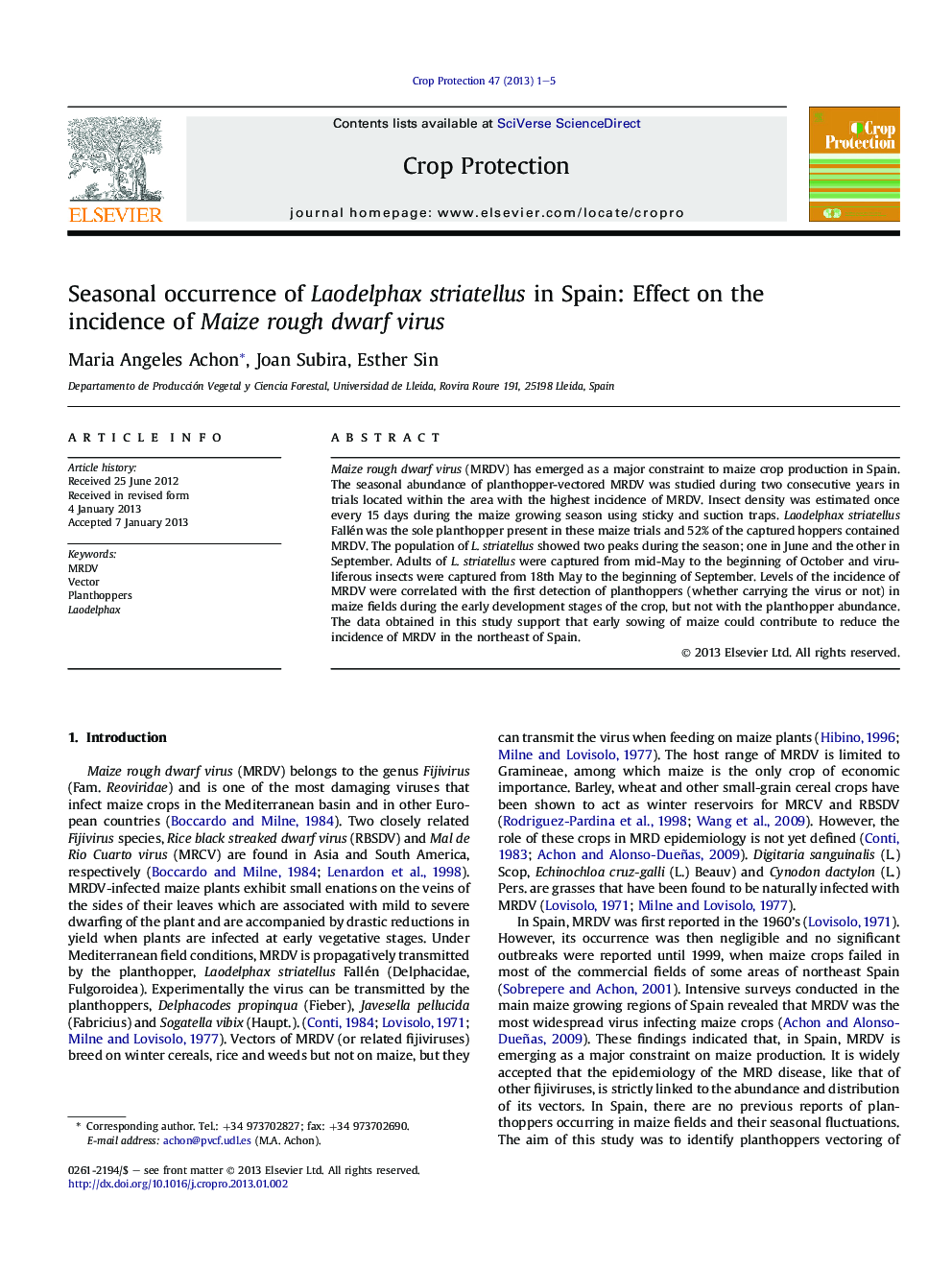| Article ID | Journal | Published Year | Pages | File Type |
|---|---|---|---|---|
| 4506076 | Crop Protection | 2013 | 5 Pages |
Maize rough dwarf virus (MRDV) has emerged as a major constraint to maize crop production in Spain. The seasonal abundance of planthopper-vectored MRDV was studied during two consecutive years in trials located within the area with the highest incidence of MRDV. Insect density was estimated once every 15 days during the maize growing season using sticky and suction traps. Laodelphax striatellus Fallén was the sole planthopper present in these maize trials and 52% of the captured hoppers contained MRDV. The population of L. striatellus showed two peaks during the season; one in June and the other in September. Adults of L. striatellus were captured from mid-May to the beginning of October and viruliferous insects were captured from 18th May to the beginning of September. Levels of the incidence of MRDV were correlated with the first detection of planthoppers (whether carrying the virus or not) in maize fields during the early development stages of the crop, but not with the planthopper abundance. The data obtained in this study support that early sowing of maize could contribute to reduce the incidence of MRDV in the northeast of Spain.
► MRDV has emerged as a major constraint to maize production in Spain. ► Virus diseases transmitted propagatively are strictly linked to its vectors. ► Laodelphax striatellus was the sole vector of MRDV. ► The MRDV incidence was correlated to first detection L. striatellus in maize fields. ► Early sowing maize could contribute to reduce MRDV incidence.
